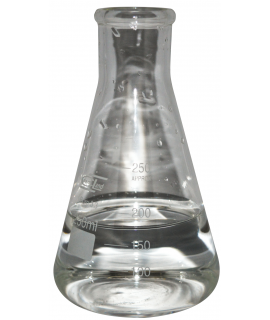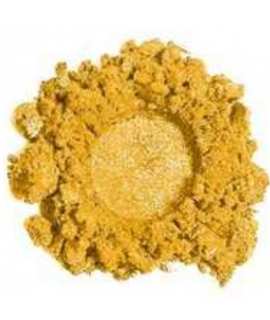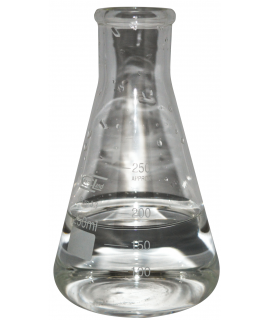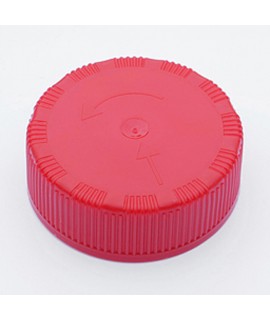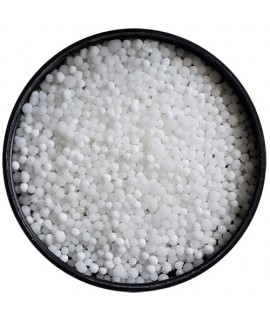DIETHANOLAMINE (DEA) 80%, L
5.99 €
DEA, CAS 111-42-2, Bis(hydroxyethyl)amine, N,N-Bis(2-hydroxyethyl)amine, 2,2'-dihydroxydiethylamine, β,β'-dihydroxydiethylamine, Diolamine.
Parameter | Attribute |
Diethanolamine | DEA, Bis (hidroxyethyl) amine, N, N-Bis (2-hidroxyethyl) amine, 2,2'-dihidroxydiethylamine, β, β'-dihidroxydiethylamine, Diolamine, 2 - [(2-hidroxyethyl) amino] ethanol, 2,2'-aminobisethanol, Iminodiethanol, Di (2-hidroxyethyl) amine, bis (2-hidroxyethyl) amine, 2,2'-aminodiethanol |
Formula | HN(CH2CH2OH)2 |
Structure |  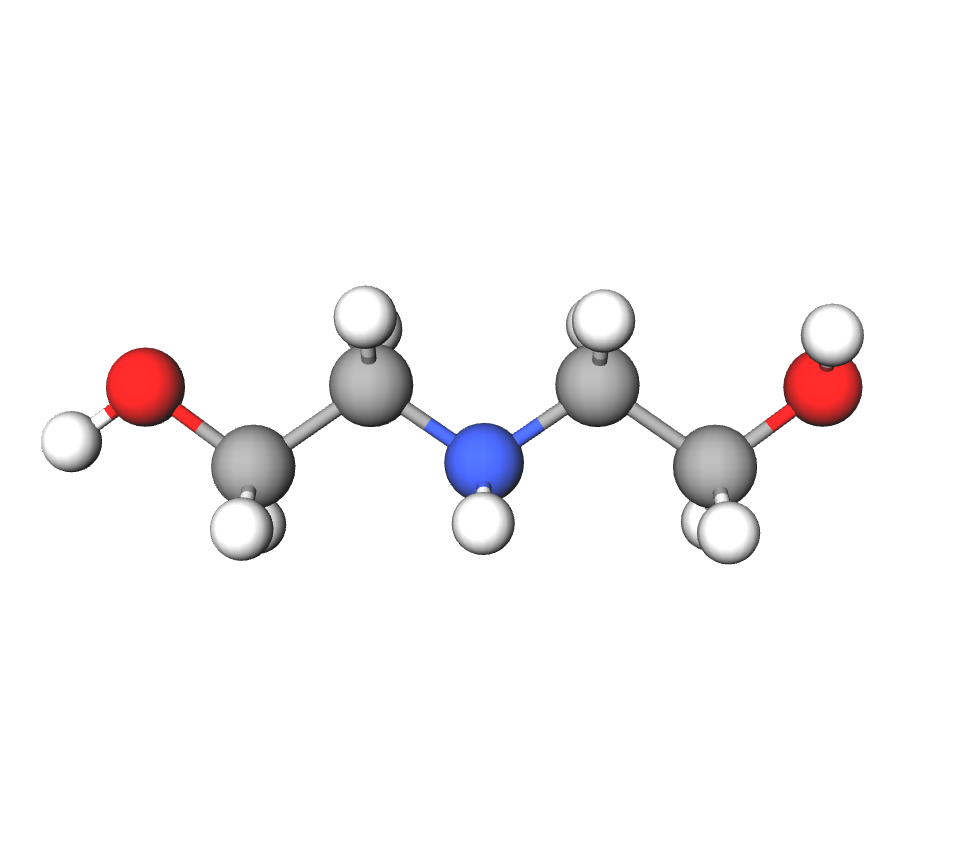 |
IUPAC | 2,2'-aminodiethanol |
CAS | 111-42-2 |
Molar mass | 105,137g/mol |
Density | 1.097g/cm3 (20 °C) |
Solubility | In water miscible |
Diethanolamine, often abbreviated as DEA or DEOA, is an organic compound with the formula HN(CH2CH2OH)2. Pure diethanolamine is a white solid, but due to its tendency to absorb water it is often used as a colorless, viscous liquid. Diethanolamine is multifunctional, being a secondary amine and a diol. Like other organic amines, diethanolamine acts as a weak base. Reflecting the hydrophilic nature of the secondary amine and hydroxyl groups, DEA is soluble in water.
In horticulture, gardening and agriculture, diethanolamine is used as a component of micronutrient fertilizers, which increases the penetration of elements through the leaves, and influences a number of physiological processes in animals and plants, such as seed germination, plant-pathogen interactions, chloroplast development and flowering. DEA helps to improve the distribution of the active components of pesticides, insecticides or herbicides.
In industry, diethanolamine is used for gas cleaning by scrubbers. As DEA is a weak base it readily binds combustible carbon particles, carbon dioxide, sulfur dioxide, hydrogen sulfide, light thiols and other compounds. Diethanolamine is an indispensable absorbent in the cleaning or purification of any gas. In submarines, DEA is used to remove carbon dioxide from the air. DEA also ionizes acids by reducing their polarity, making hard-to-solubilize acids more soluble in water.
In cosmetics, diethanolamine is used as a buffer and pH adjuster, antistatic agent, emulsifier, foaming agent and non-ionic surface agent. It also acts as an emulsifier and/or as an excipient in the formulation of emulsions.
In water treatment, diethanolamine is used in steam generators because, due to its bipolarity, it adjusts the pH of the boiling water, thus reducing the corrosive effect, but at the same time it does not accumulate in the steam, resulting in a clean steam. In water purification, DEA is one of the key components in the purification of contaminated water, as the bipolar molecule successfully neutralizes oxidizing agents as well as acids and alkalis. In water treatment plants, DEA in water solution is used to remove hydrogen sulfide from acid gases. It has an advantage over the similar amine ethanolamine in that a higher concentration can be used for the same corrosive potential. This allows water treatment plants to bind hydrogen sulfide with a smaller amount of circulating amine using less energy.
In woodworking, diethanolamine is one of the main components to impregnate wood and protect it from external influences. It is commonly found as a component in copper-quaternary ammonium or copper-azole antiseptic impregnants. Both types of impregnants are alternatives to arsenic impregnants.
In metalworking, diethanolamine is commonly found in liquids and is used as an anticorrosive additive, surface degreaser, emulsifier and cleaning agent. It has the advantage over monoethanolamine (MEA) of having twice the capacity to bind oxygen and carbon dioxide, and therefore requires half as much to achieve the same anticorrosive effect.
In the paint industry, DEA is used as an adhesion enhancer (to increase the bonding between surfaces). It can be found in absorbents, paints, varnishes and surface coatings.
Important: Add the item to your basket, fill in the recipient's details and confirm your order. Thank you!
To save your precious time, we will deliver your order to your address at a time convenient for You!
*- Pictures of the goods may not reflect the actual appearance, color, assembly or shape of the goods and their packaging. The information in the product description is general and may not correspond to the information on the packaging of the product and may not be accurate as to the use of the product. The information given on the stocks and prices of goods may, in certain cases, differ from the actual prices and stocks of goods
Signal word: Danger |
Hazard icons:
|
Danger phrases: H302 - Harmful if swallowed. H315 - Irritating to skin. H373 - May cause damage to organs <or specify all exposed organs, if known> in case of prolonged or repeated exposure <specify mode of action if it is conclusively established that other modes of action are not dangerous>. H318 - Severely damages eyes. |
Precautionary statements: P260 - Do not inhale dust/fumes/gas/smoke/vapor/aerosol. P280 - Wear protective gloves/protective clothing/use eye/face protection. P270 - Do not eat, drink or smoke while using this product. P305+P351+P338 - In case of contact with eyes: wash gently with water for several minutes. Remove contact lenses, if present and if easy to do so. Continue to wash eyes. P310 - Call the ACCIDENT CONTROL AND INFORMATION OFFICE or seek medical advice immediately. P332+P313 - In case of skin irritation: seek medical advice. P362 - Remove contaminated clothing and wash before putting it back on. P264 - After use, wash thoroughly ... P501 - Hand over the contents/container to a licensed waste management company P301+P330+P331 - INJURY: rinse mouth. DO NOT induce vomiting. P303+P361+P353 - IN CASE OF CONTACT WITH SKIN (or hair): Immediately remove/remove all contaminated clothing Wash skin with water/urine. P321 - Special treatment (see ... on this label). |
Related products
(8 other products in the same category)


